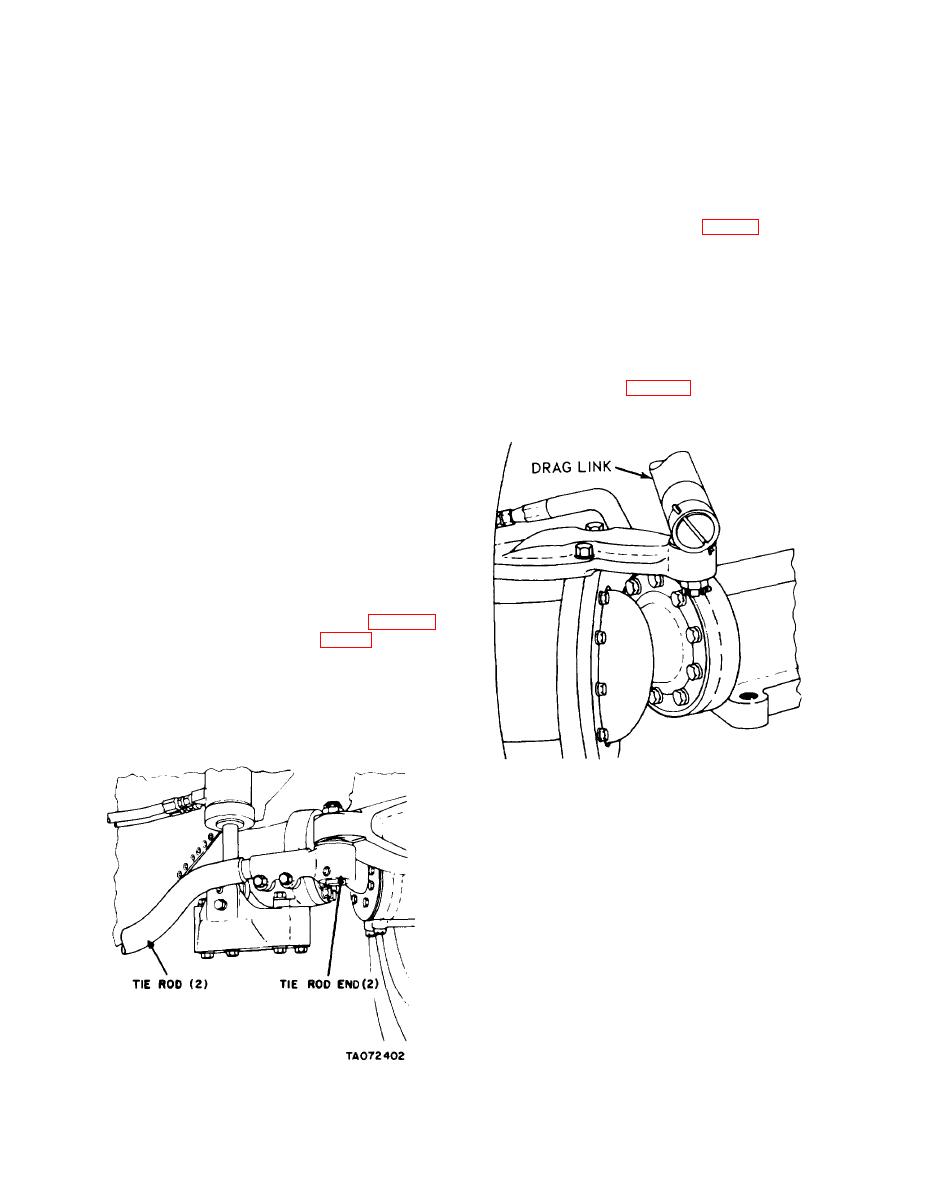 |
|||
|
|
|||
|
Page Title:
Section XVI. MAINTENANCE OF STEERING SYSTEM |
|
||
| ||||||||||
|
|
 TM10-3930-242-12
Section XVI. MAINTENANCE OF STEERING SYSTEM
WARNING
Drycleaning solvent, P-D-680, used to
NOTE
clean parts is potentially dangerous to
After removing hydraulic lines, be sure
personnel and property. Do not use near
and cap lines and use plug caps on cylin-
open flame or excessive heat. Flash point
ders to keep out foreign objects.
of solvent is 138F.
a Cleaning. Clean the steering cylinders with
drycleaning solvent (item 1, App F) and dry
4-64. General
thoroughly.
The steering system is hydraulic. Pressure is sup-
b. Inspection. Inspect the steering cylinder pins
plied by two hydraulic pumps mounted on the front
for conrrect fit. Check mounting and cylinder for
and rear of torque converter housing. Normal
cracks and damage. Check hydraulic lines for bends
operating pressure is 2,000 psi. Source of oil is the
and nicks. Check line fittings for leaks and cracked
main hydraulic oil supply tank. The four wheel
nuts. Replace defective parts.
steering capability is controlled by a system of links
located under the driver's compartment. The modes
of steering are controlled by a three position
Inspect the drag link (fig. 4-41) for binding, breaks,
hydraulic cylinder anchored on the pitman and ac-
or bends. Check mounting hardware for security.
ting upon the intermediate link. A valve, located in
Replace a defective drag link.
the link anchored on the rear cross shaft bellcrank
and wheel forward end of the intermediate link, con-
trols action of the rear wheel steering by hydraulic
pressure.
CAUTION
Do not operate forklift truck with cockpit
compartment doors open to prevent in-
jury to personnel.
with drycleaning solvent (item 1, App F) and Dry
thoroughly.
b. Inspect the tie rods and tie rod ends for cracks,
bends, and breaks. Inspect the pins for proper fit.
Inspect nuts for stripped threads and proper fit.
Report defective parts to your supervisor im-
mediately.
TA031876
Figure 4-40. Tie rods and tie rod ends.
|
|
Privacy Statement - Press Release - Copyright Information. - Contact Us |